Most people think they have to travel west to the Rocky Mountains to see larch trees in Canada. But the popular autumn tree can be seen all over the country. This means that yes – you can see golden larch trees in Saskatchewan too.
**Interesting Fact: Larches are also commonly called Tamarack or Hackmatack depending where you live. Either name is correct and can be used interchangeably.
What are Larch Trees?
Larches are an unusual tree. Their inch-long leaves are flat and needle-like yet unexpectedly soft. In summer, they look like an evergreen, but in winter it’s obvious by their bare branches they aren’t. Although they have needles and cones (which makes them conifers like fir, cedar and pine trees) they’re deciduous. This means their needles not only fall off, but they change from green to a nearly fluorescent golden yellow in the autumn.
READ MORE: Best Places to See the Fall Colours in Saskatchewan
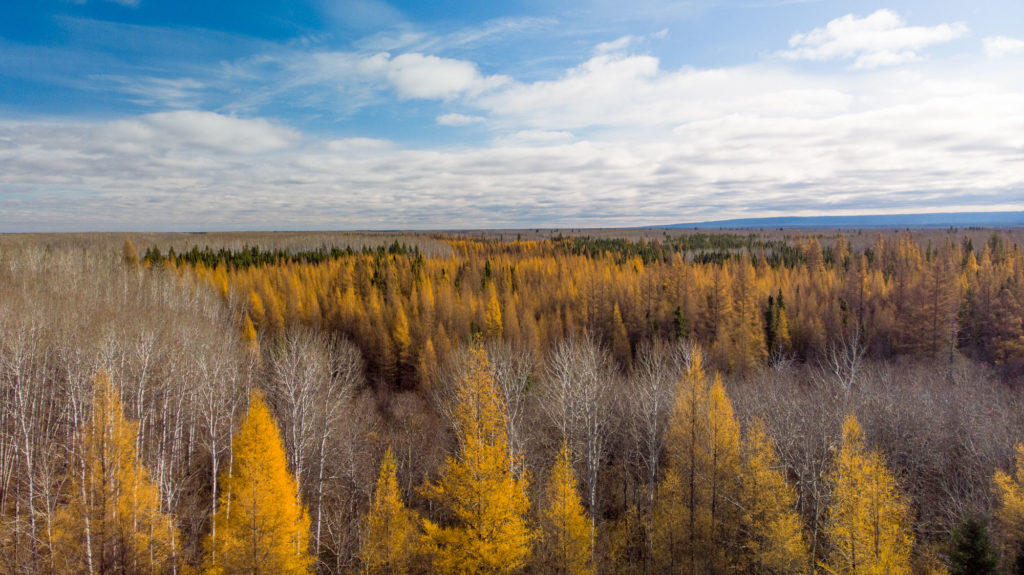
When is a Good Time to See Larch Trees in Saskatchewan?
Autumn isn’t over until the larches say it’s over.
Larches start to change colour shortly after all the other trees. They are often in peak colour once the leaves on all the other trees have fallen or are close to falling off. This gives an extended autumn leaf-viewing window to our very short season in the prairies.
The best time to see larch trees in Saskatchewan is within the last ten days of September and the first ten days of October.
Where to See Larch Trees in Saskatchewan
To view larch in Saskatchewan, it can be as easy as driving through our northern forested region of the province. However, as Saskatchewan is literally half forest (52.7% or 34.3 million hectares), this means that there are A LOT of places you can go to see them.
More specifically, larches are found in wetlands and peatlands and you’ll often find black spruce nearby.
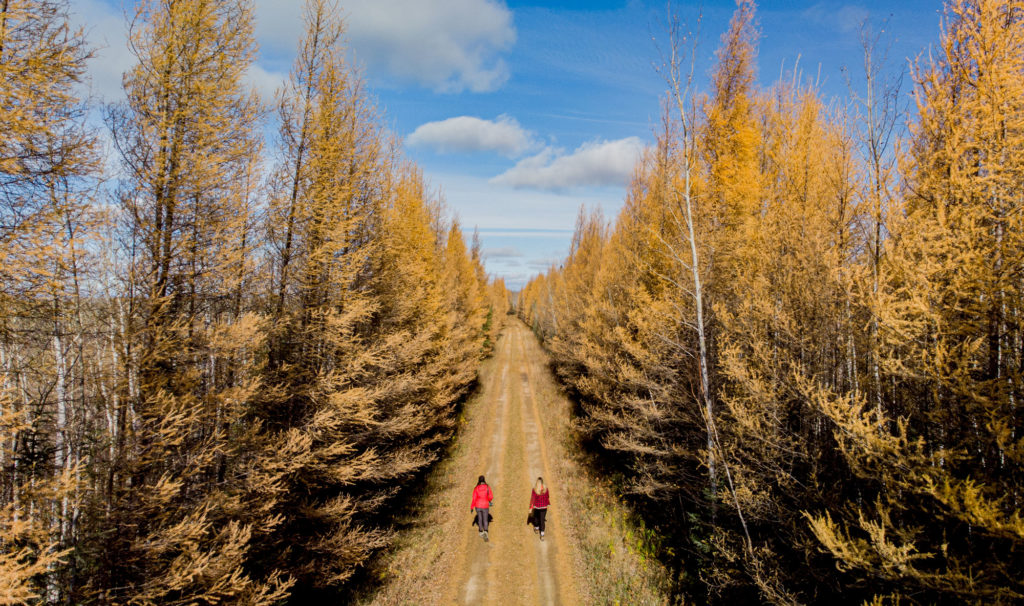
Six Locations to See Larch in Saskatchewan
Here are six locations in the province to see the larch as they turn their beautiful gold colour.
1. Gem Lakes Trail
The larches in Narrow Hills Provincial Park don’t disappoint – particularly on the Gem Lakes trail.
It’s a popular hike in summer in Saskatchewan and even more impressive in the autumn. The Gem Lakes hiking trail is a 5.5-kilometre loop around a series of seven lakes named after different gemstones. For day hikers, the trail is a 2-3 hour hike along the undulating ridges, but it’s also popular with backcountry campers.
It’s one of the best trails to visit in late autumn when the larches rimming the lakes have turned golden yellow. The trees reflect brilliantly in the emerald green of the lakes and there are dozens of viewpoints from the top of the winding ridges. It’s also a great place to launch a paddleboard, kayak or canoe and try fly fishing.
READ MORE: The Best Hiking Trails to See the Autumn Colours in Saskatchewan
2. Hudson Bay
The lure of golden larches entices both locals and travellers to the Hudson Bay region during the autumn months. The area is known for its boggy marshland which is an ideal location to find larch. In fact, last autumn I spent three days intent on finding as many golden larches as I could in mid-October.
Head out on Highway 3 east and west of town for larch. Or head north on Highway 9. The side roads, bridges and pull-off points all offer great views of the forest.
The area is also home to two of the highest points of land in the province, Bainbridge Hill and Brockelbank Hill. There’s a camera set up by the government at Bainbridge Hill to keep an eye on road conditions but it’s also a way to see the autumn colours if you can’t be there in person.
Closer to town, only two miles east of Hudson Bay on Highway 3 is Trout Pond. This is a great stop for a picnic lunch and a short walk around the little lake. Larches are scattered on the shoreline amongst other deciduous trees and it’s a great photo op on calm days. For those who like fishing, the lake is stocked with rainbow trout and there’s even a geocache hidden nearby. At night, it’s an ideal location to set up for night photography.
*If travelling in the area, please be aware cell service is limited and many roads are active logging roads. Travel with caution and a full tank of fuel.
READ MORE: Finding the Best Fall Colours Near Hudson Bay, Saskatchewan
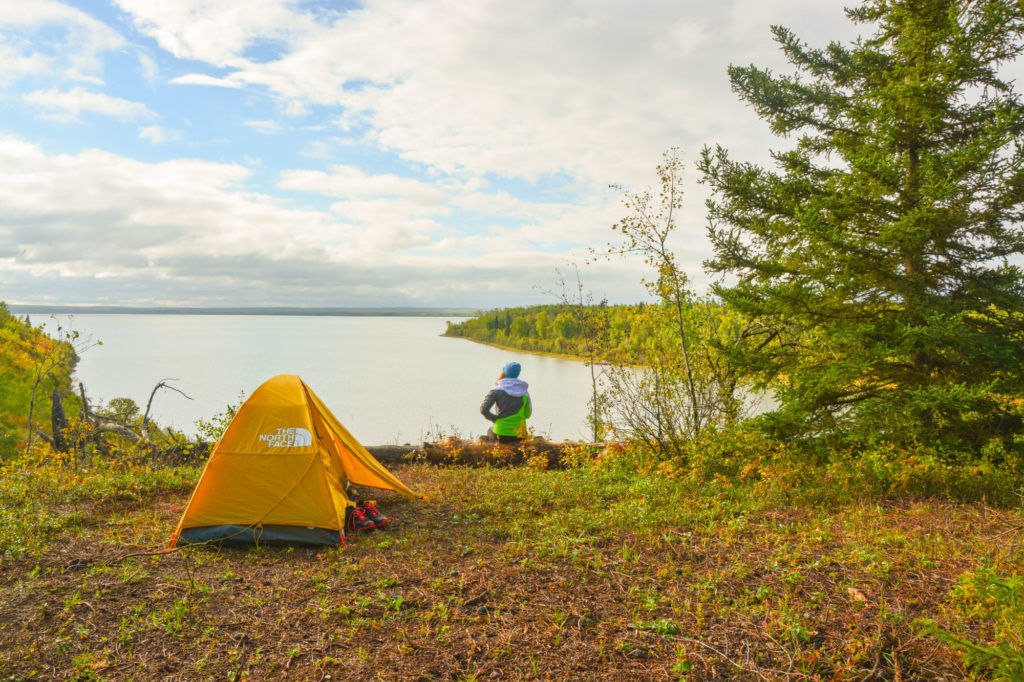
3. Meadow Lake Provincial Park
At 1600 square kilometres, Meadow Lake Provincial Park is one of the largest parks in the province. On the edge of Saskatchewan’s agricultural belt, the park falls within Canada’s boreal zone. It’s made up of spruce, pine, poplar and birch – and the golden larch tree.
The park is long – nearly 100km from the eastern park gate to the Cold River campground in the west. It’s a scenic drive through the park and there are many spots to stop along the road and view the changing fall colours. In particular are excellent viewpoints from the Goodsoil entrance on Highway 26 to Murray Doell campground over to Sandy Beach campground.
For specific trails for viewing larch, Matheson Lake is a great location. Take a hike along the Boreal Trail to Jack Pine campsite (it’s also a great spot to spend the night for backcountry campers). Another option is to hike the 400 metres trail into Wolf Bay campsite. There are elevated views over Lac des Isles Lake and a great spot to see the colours along the shoreline.
You can also hike the entire length of the park along the 135 km Boreal Trail, Saskatchewan’s longest through hike for an up-close and personal experience with autumn in the forest.
4. The Fen Trail
The Duck Mountain Highlands in this namesake park offers stunning views of the autumn colours (in particular are more orangey-red colours due to the number of Manitoba Maples throughout the park.) A drive down Ski Hill Road offers a birds-eye view of the backcountry. The road winds along the border with Manitoba and through the hills and wetlands right into the heart of Little Boggy creek and the encompassing valley.
Instead of driving to the end of the road (which would take you to Duck Mountain Ski Area) take the turn south and into a parking lot at the start of the Fen Trail. This 300-metre boardwalk is an easy walk that leads you through a forest of black spruce and larch trees. At one of three viewing platforms, you’ll find an unobstructed view of the forest as well as a view of the calcareous fen. This trail is particularly special as it’s also home to 6 different types of carnivorous plants in the wetland if you look close enough.
5. Boundary Bog Trail
Prince Albert National Park is an iconic spot in Saskatchewan when it comes to viewing the changing colours. The scenic driving route along Highway 263 is a great place to view the autumn leaves due to the transition zone between aspen parkland and boreal forest. But one hiking trail further north in the park is excellent for viewing larch.
Boundary Bog trail is a 2-kilometre family-friendly loop. The highlight of the trail lies in the marsh as it’s a favourable environment for larches to grow. The wooden boardwalk takes you right through a forest of little larch trees. But make sure to also look down while you wander. There’s a unique carnivorous plant called a pitcher plant growing low in the underbrush that lures, drowns and digests insects.
6. Highway 2 from Prince Albert to La Ronge
The 240 km drive along Highway 2 from north of Prince Albert to La Ronge is full of larch trees as far as the eye can see. The parkland to boreal forest transition zone starts near Christopher Lake. It’s an incredibly scenic drive all the way to the communities of Air Ronge and La Ronge. Stands of jackpine and larch border each community with a forest of larch edging the highway. Nearby Lac La Ronge Provincial Park and the 15km Nut Point Trail makes a great spot to enjoy the transitioning larch trees.

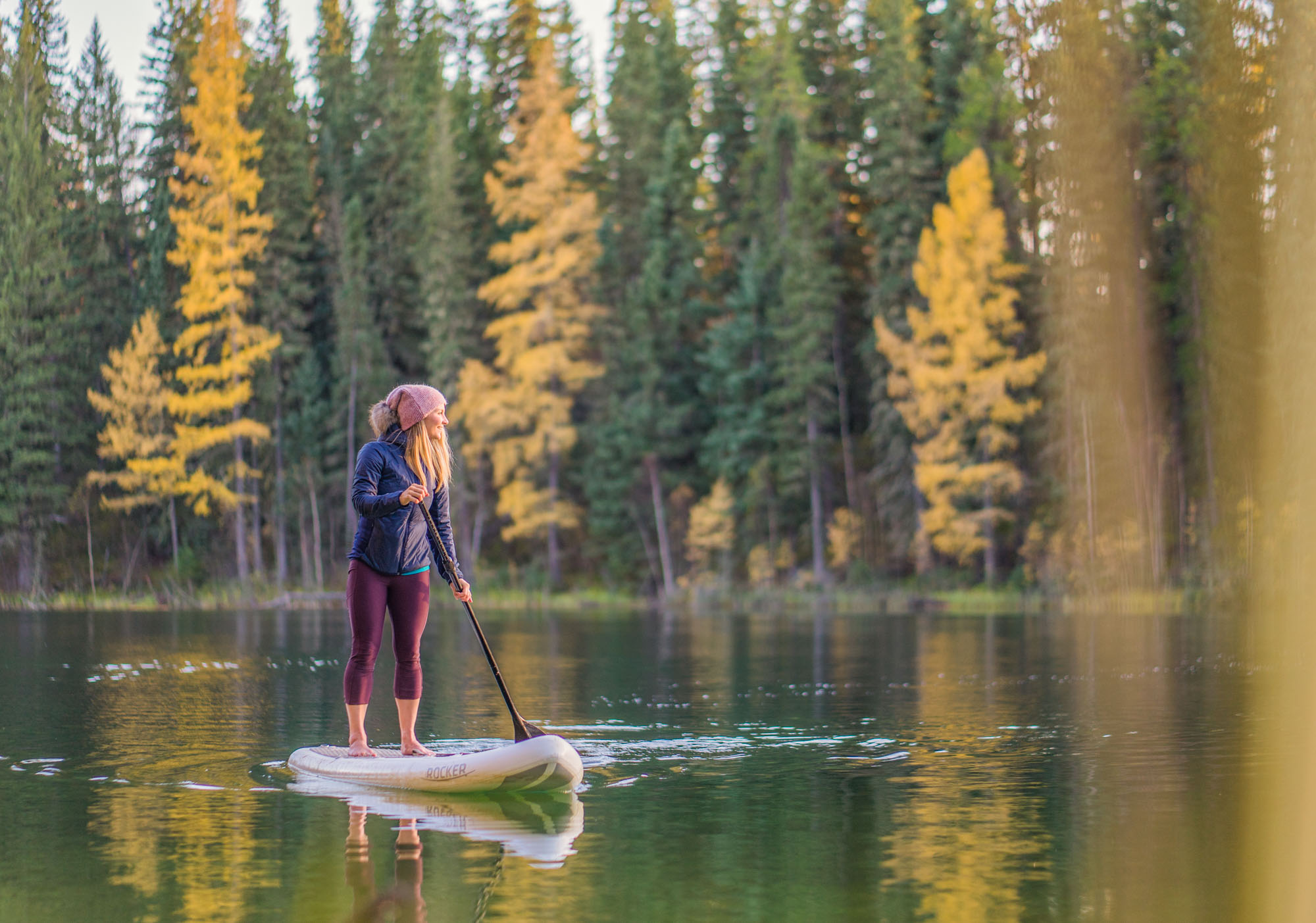
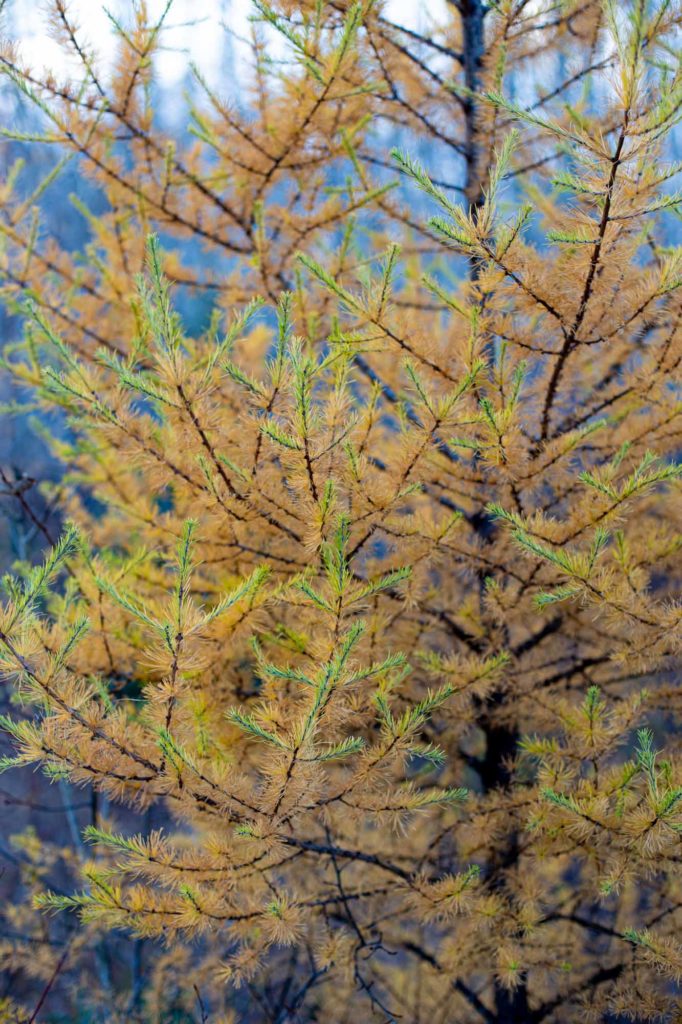
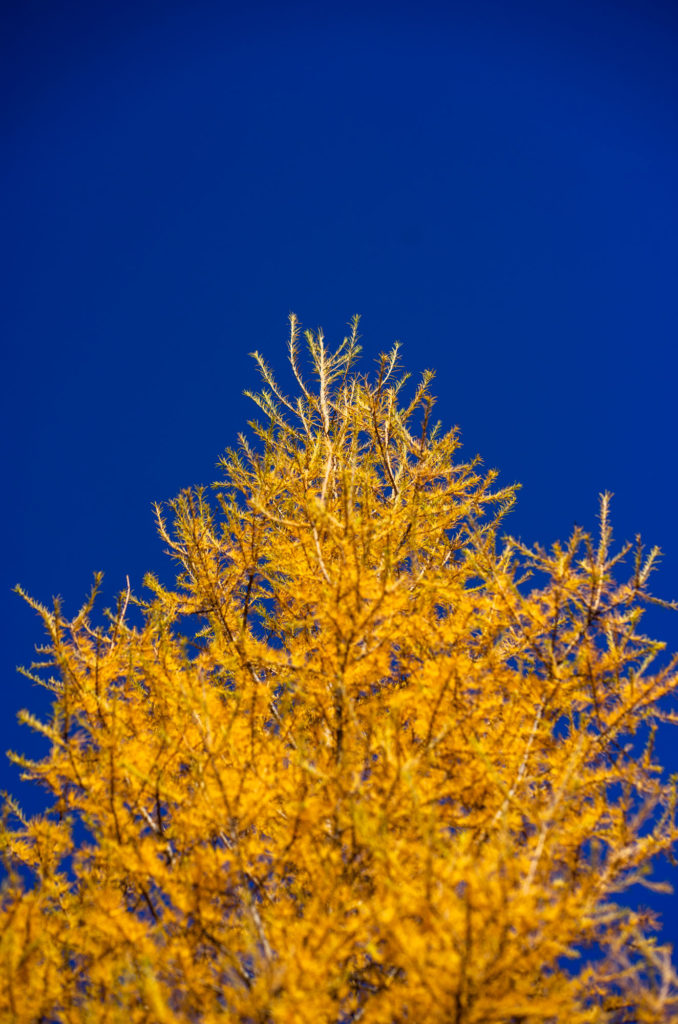
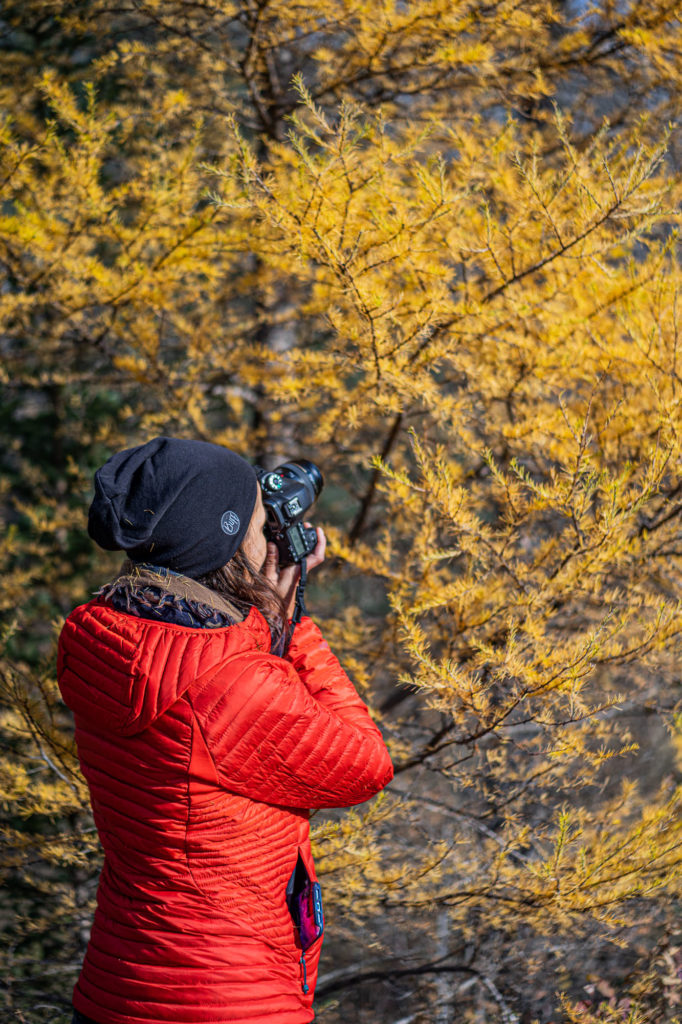
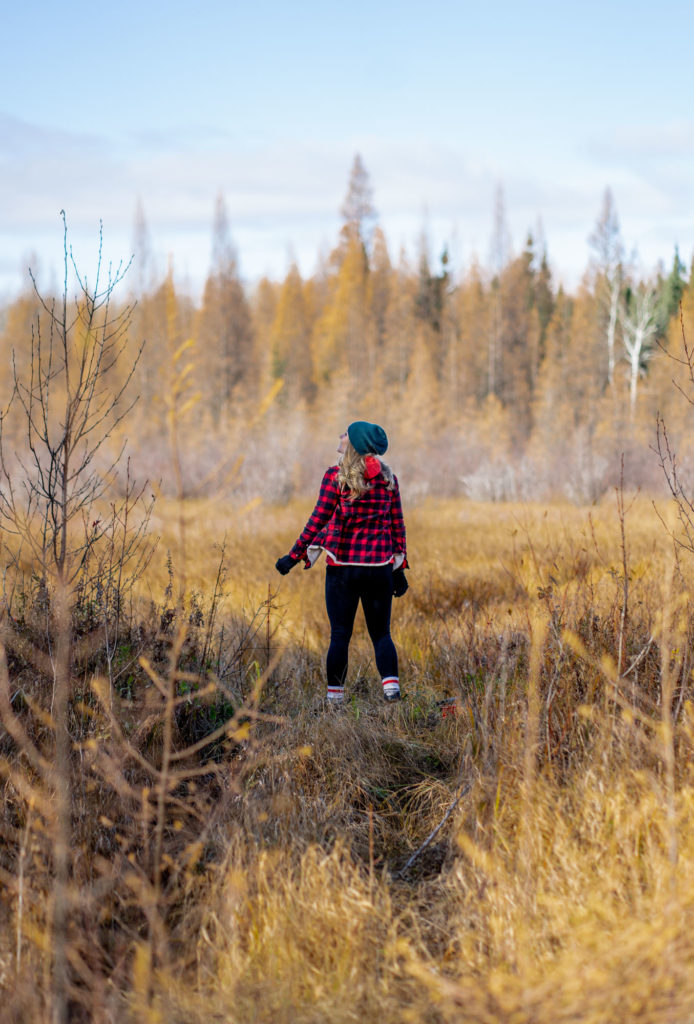
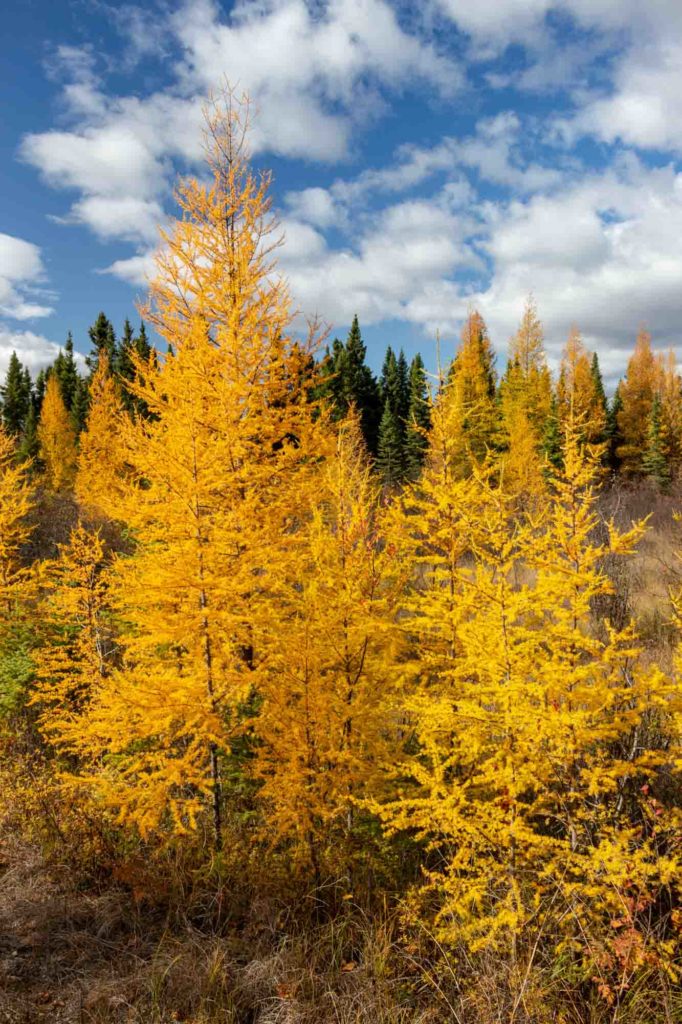
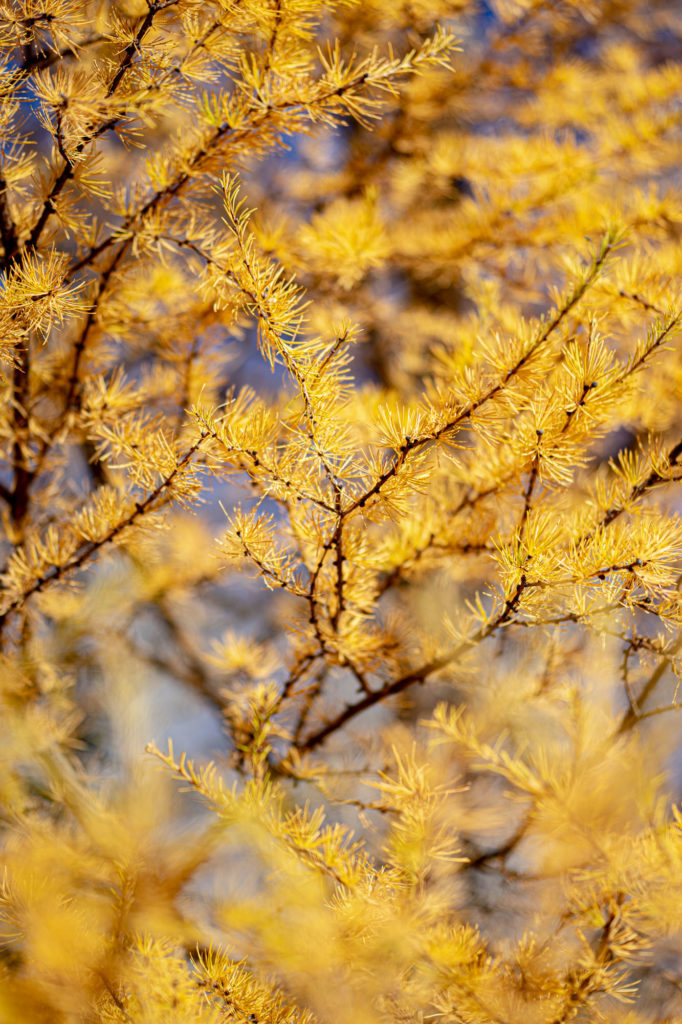
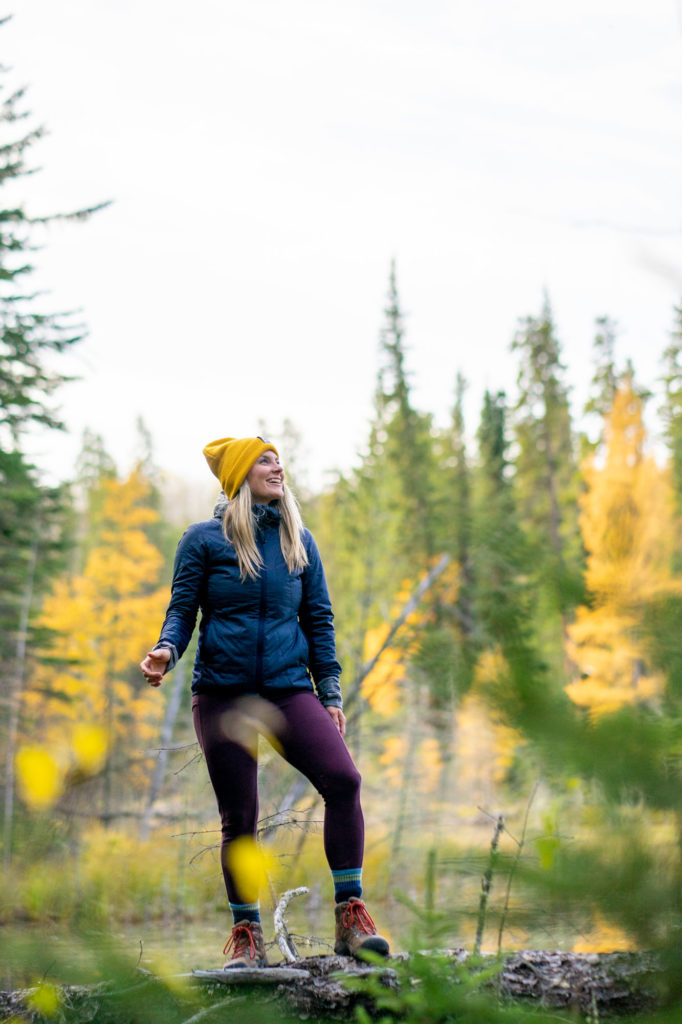
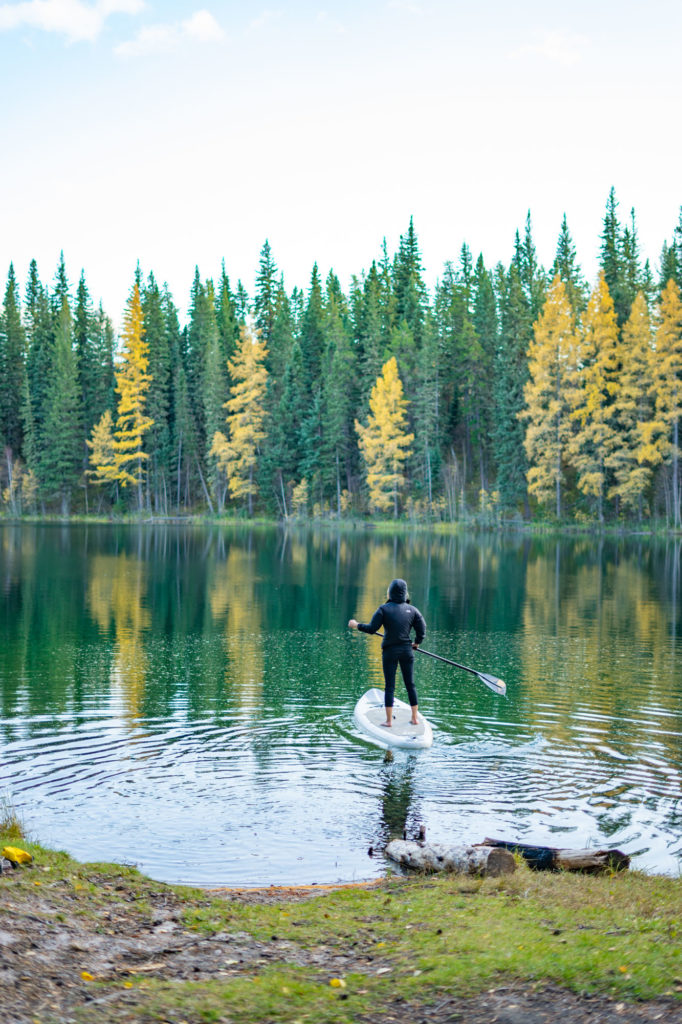
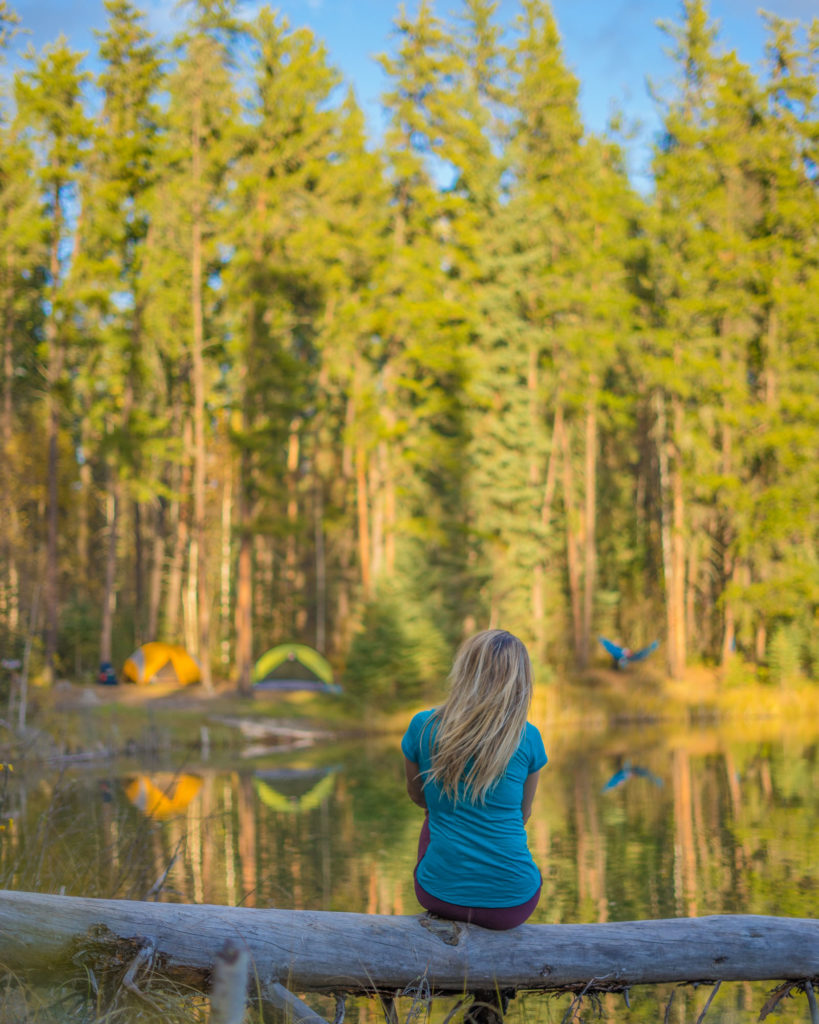
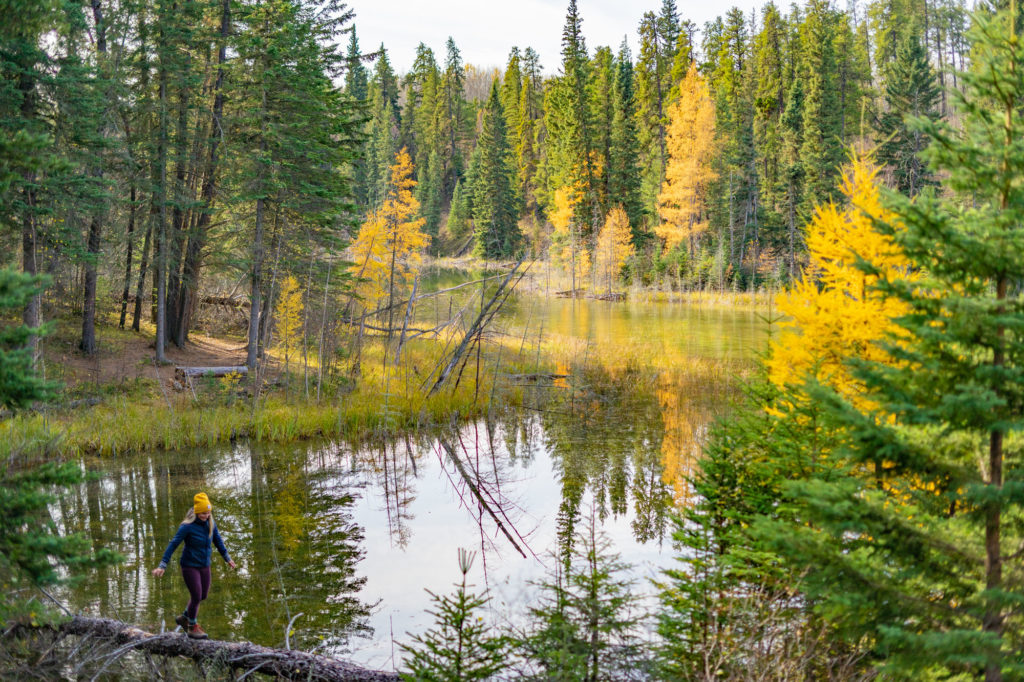
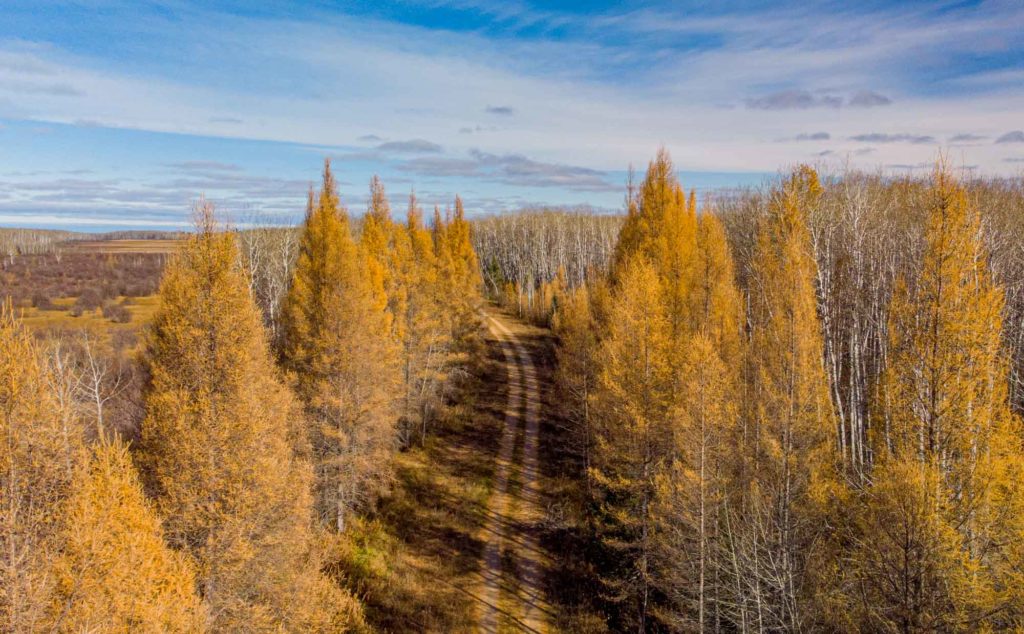
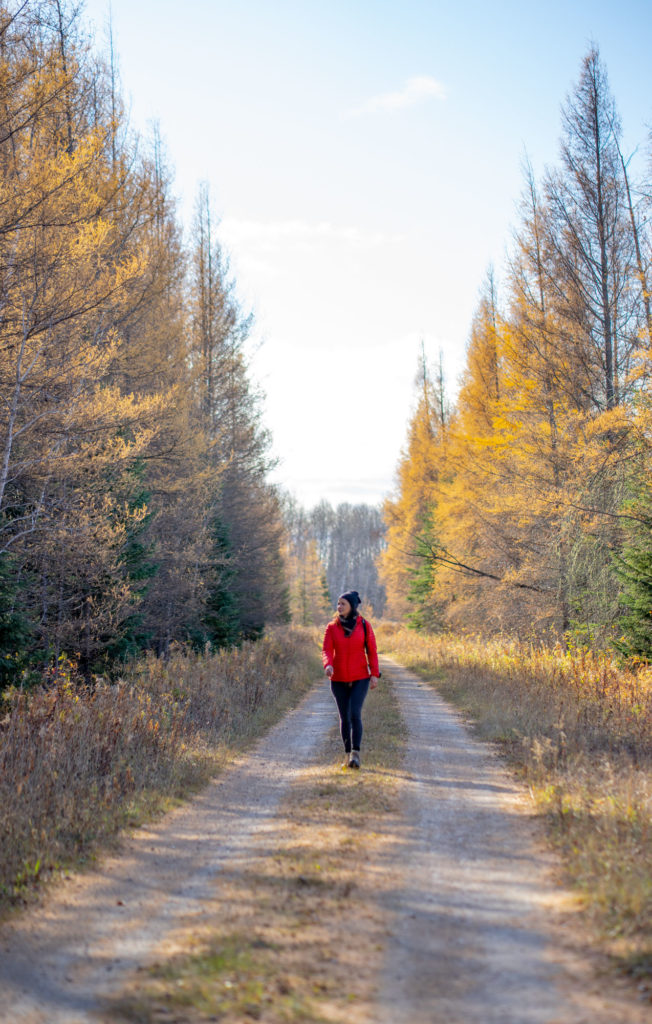

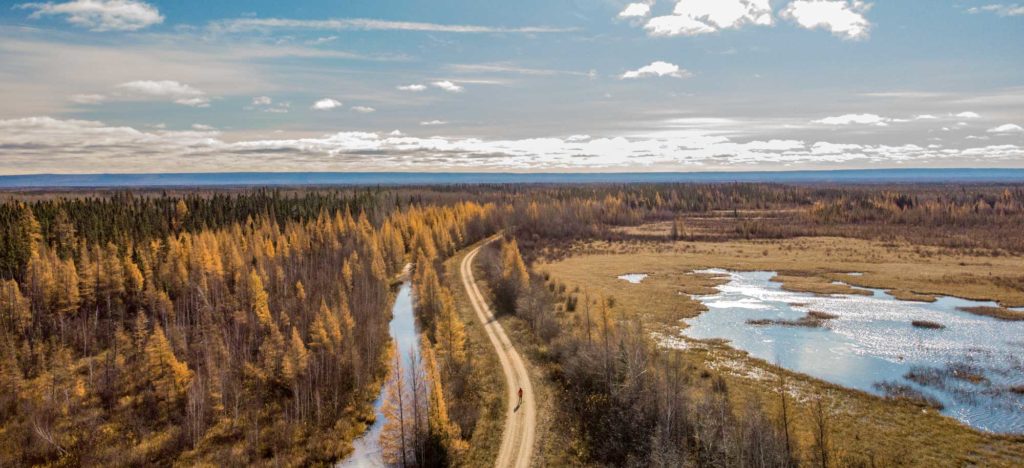
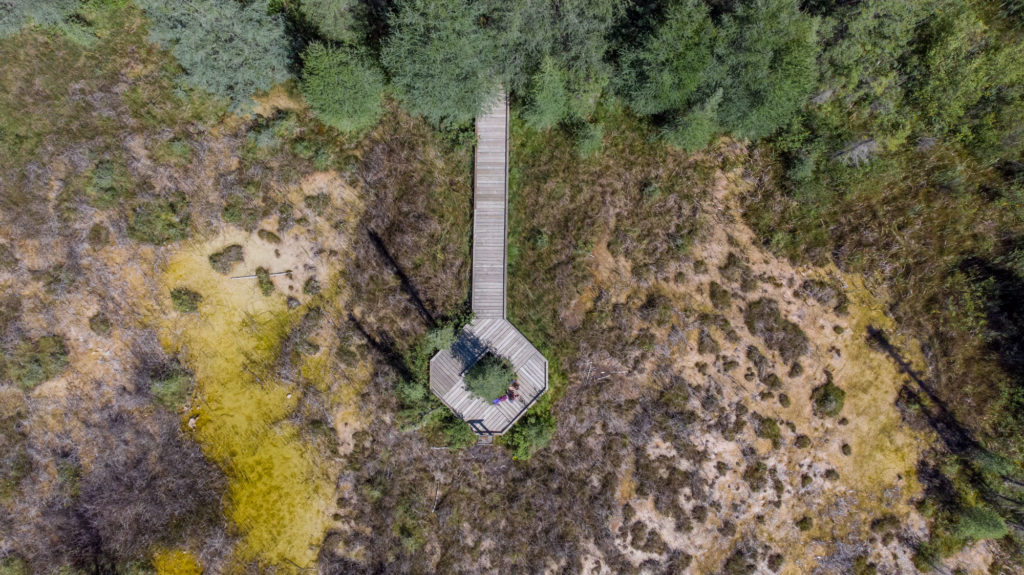
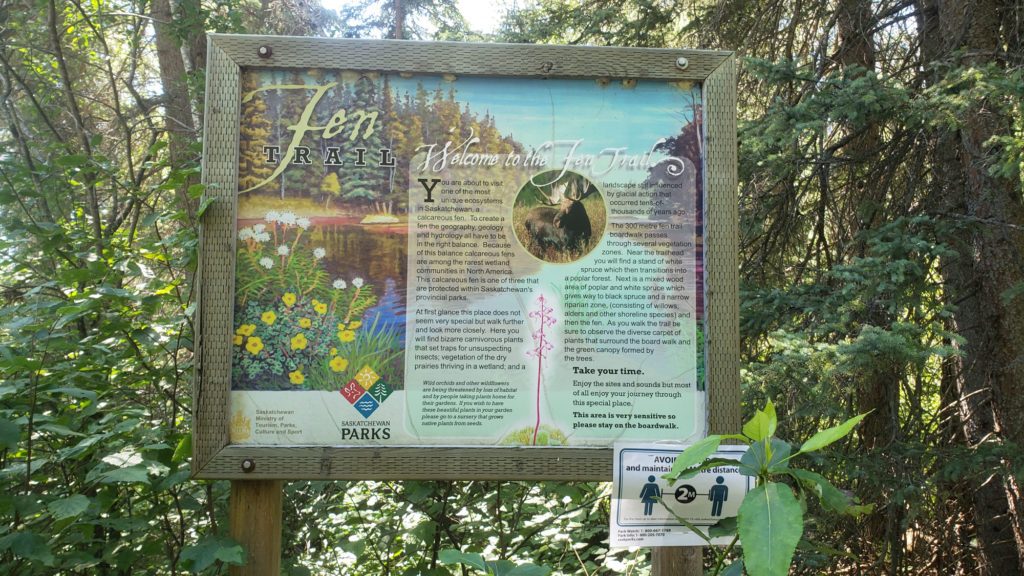
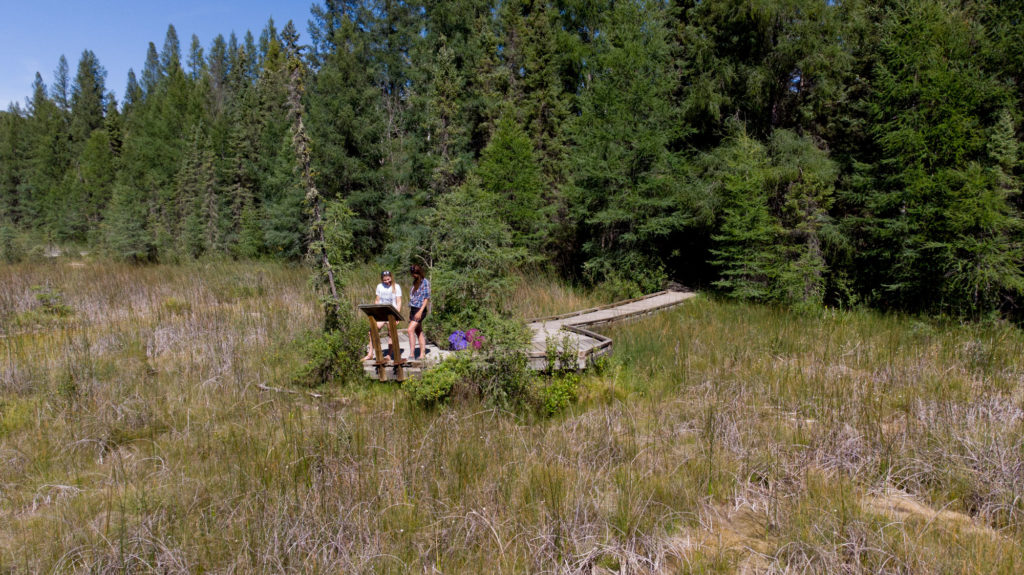
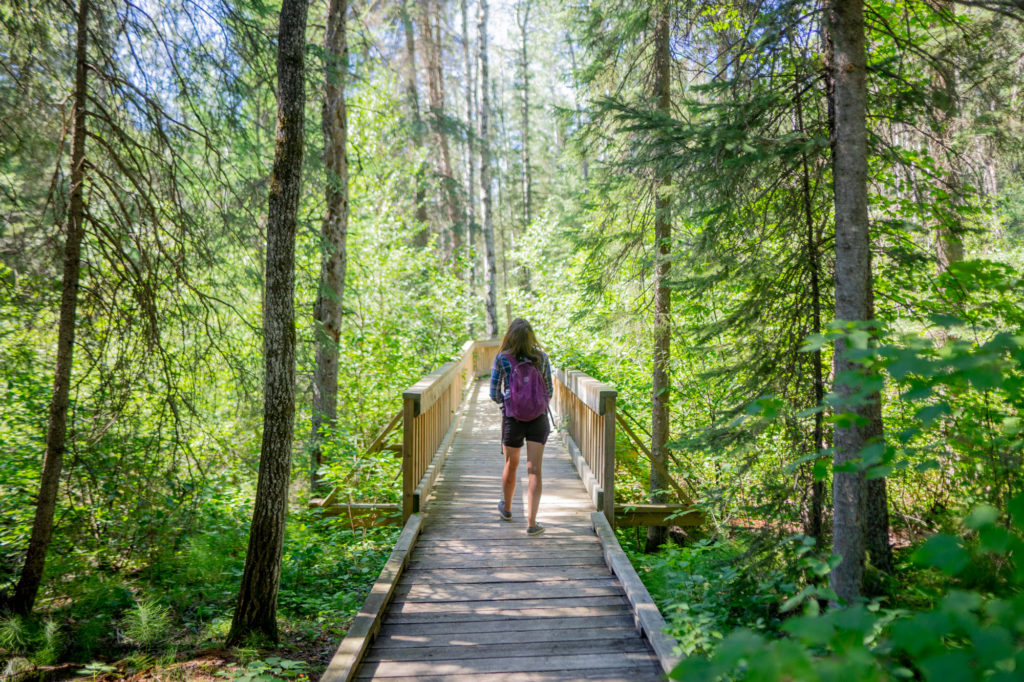
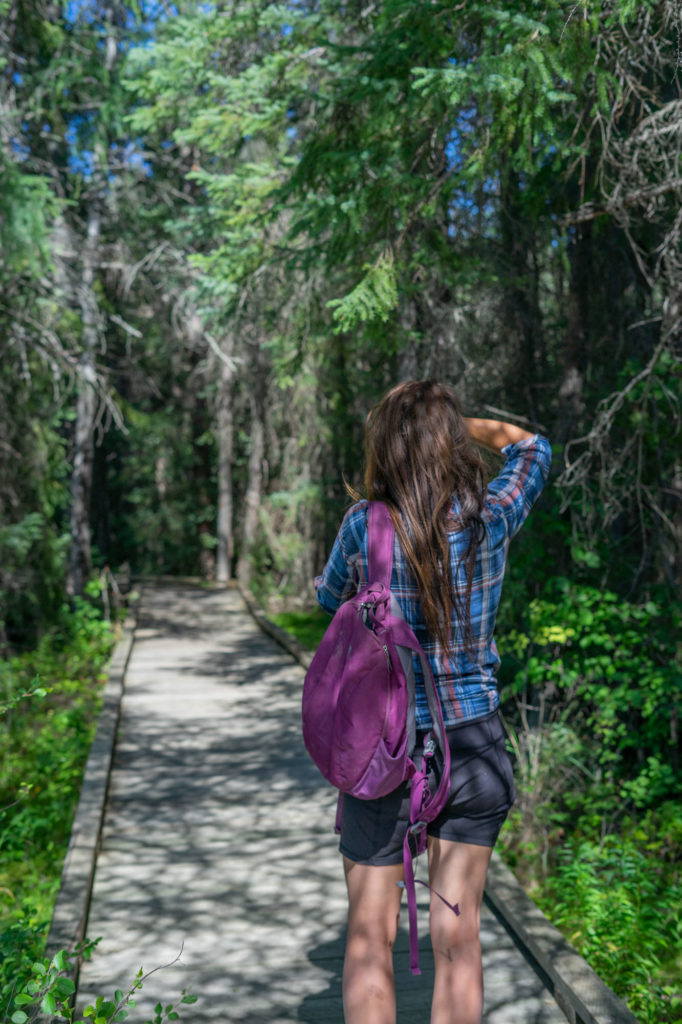
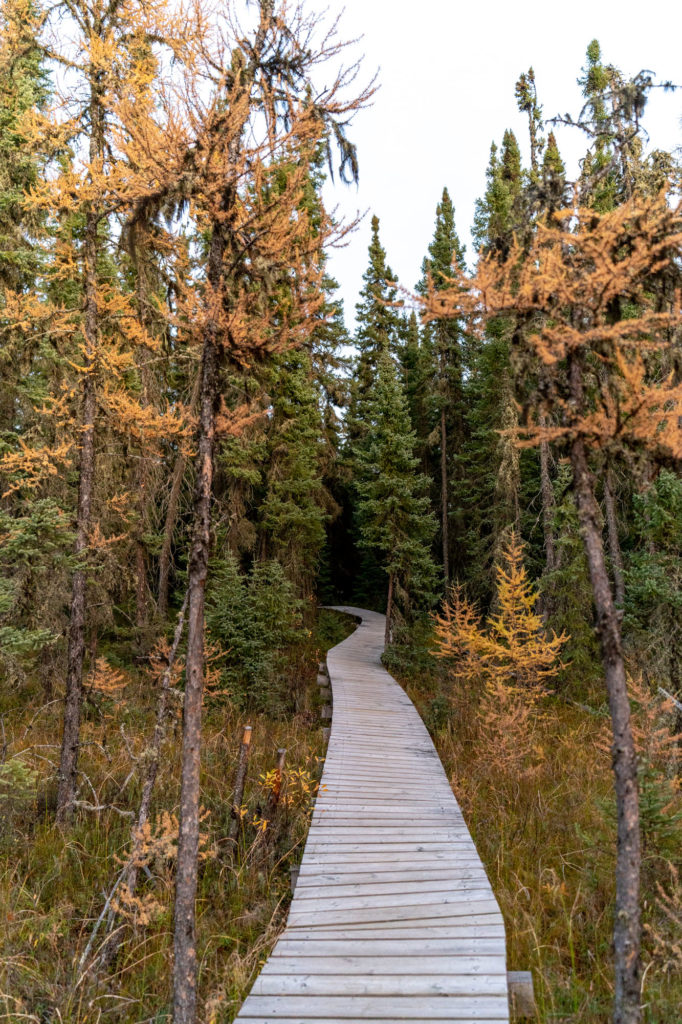
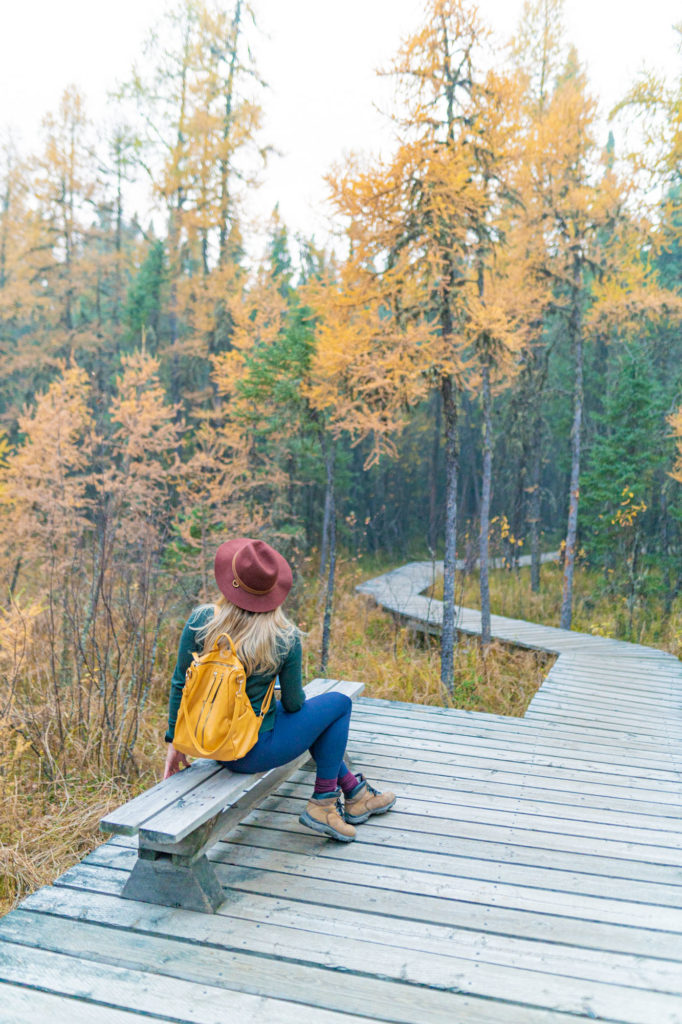
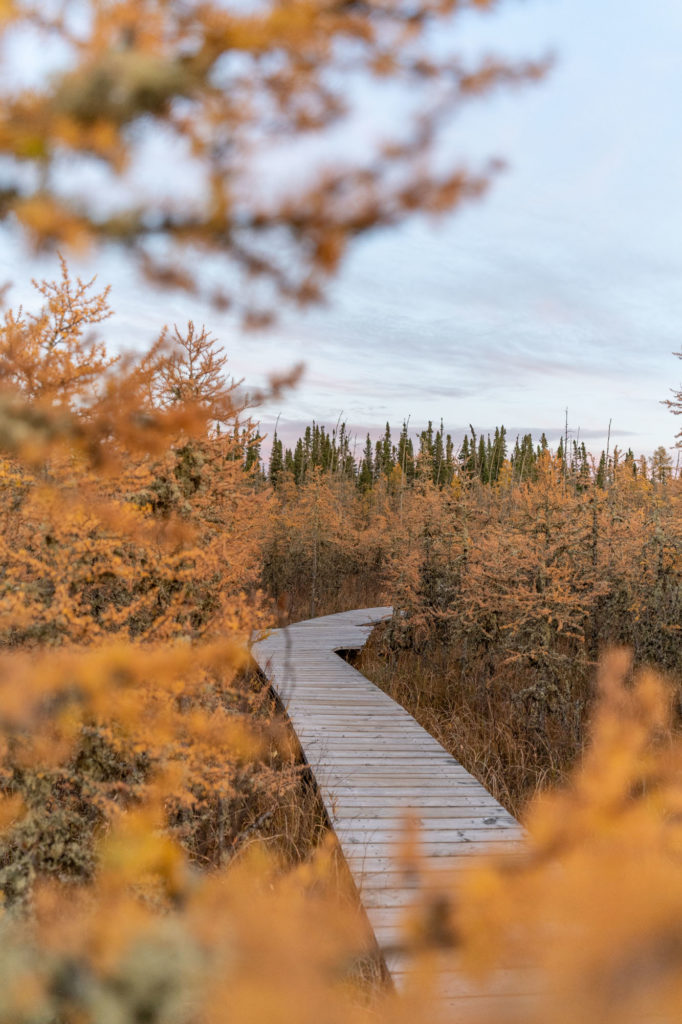
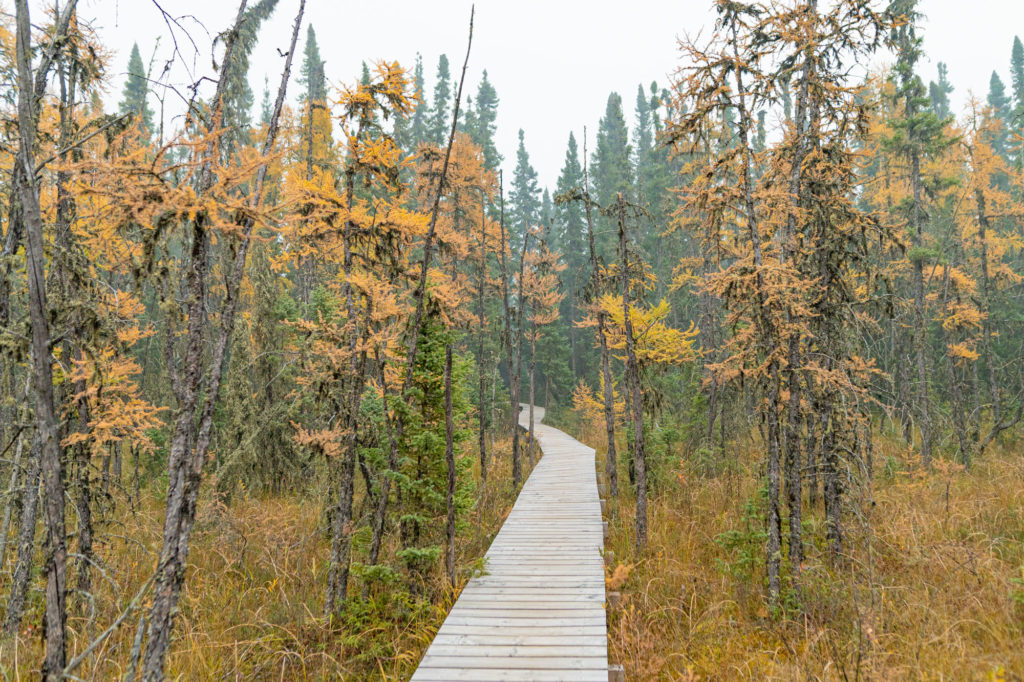
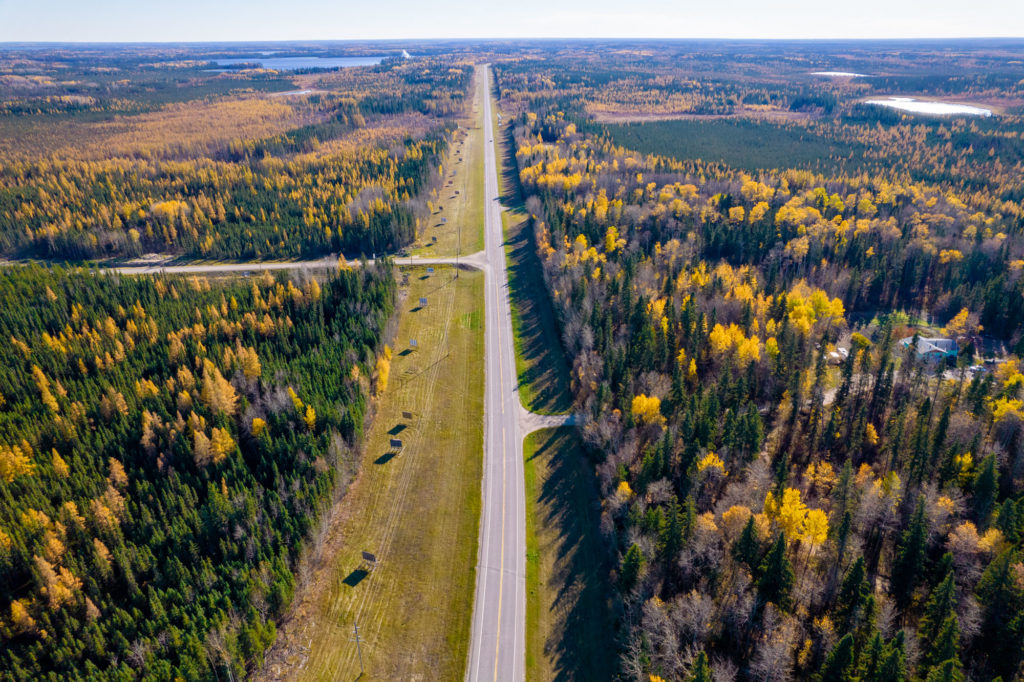
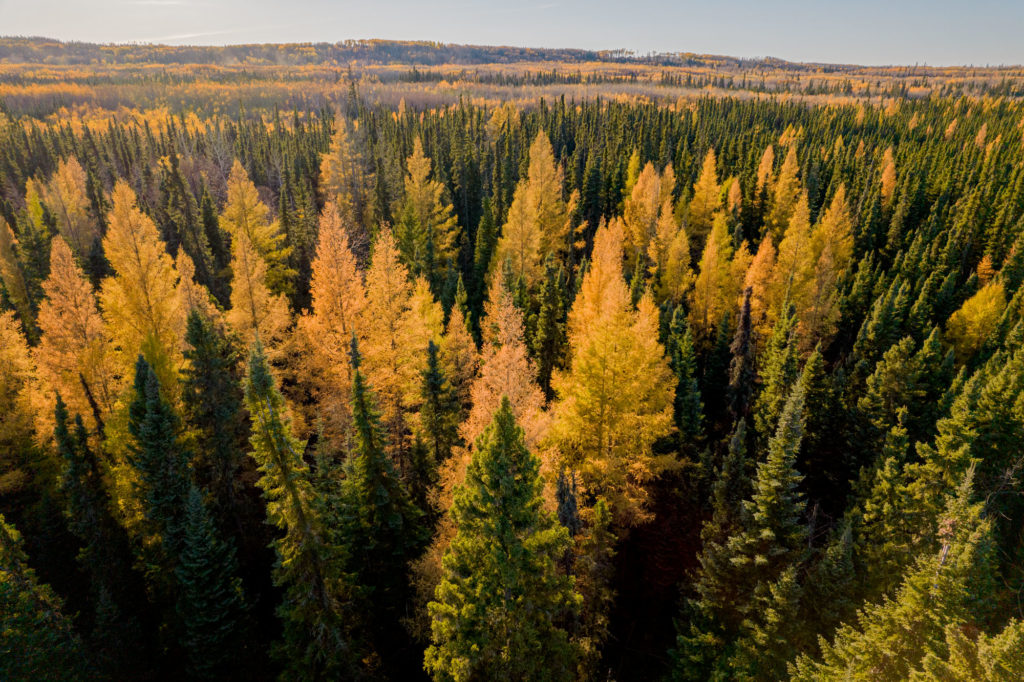
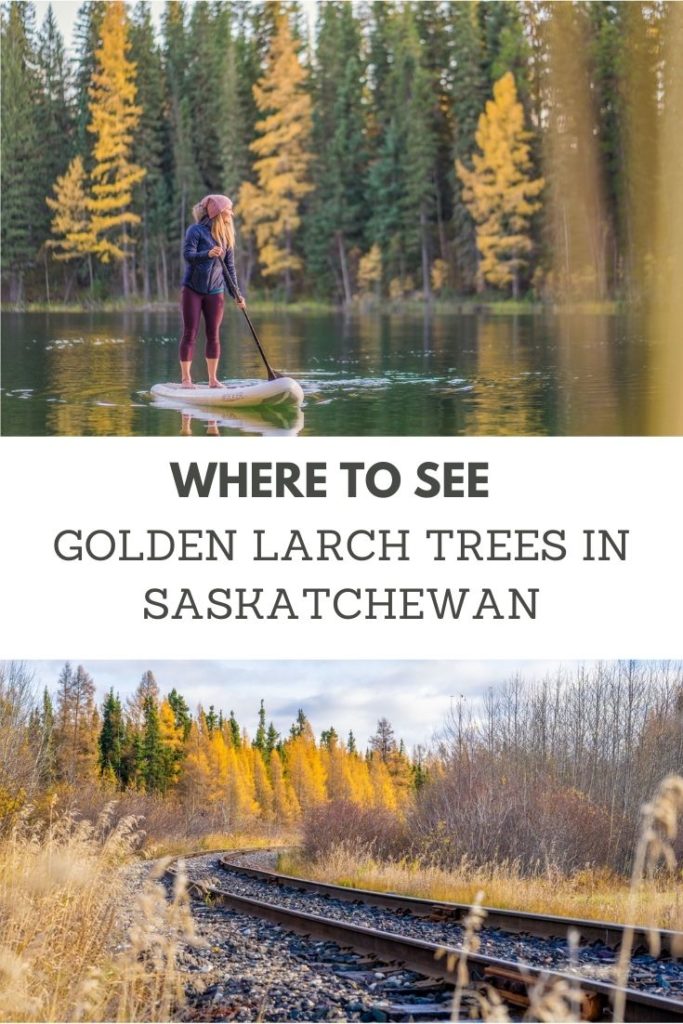
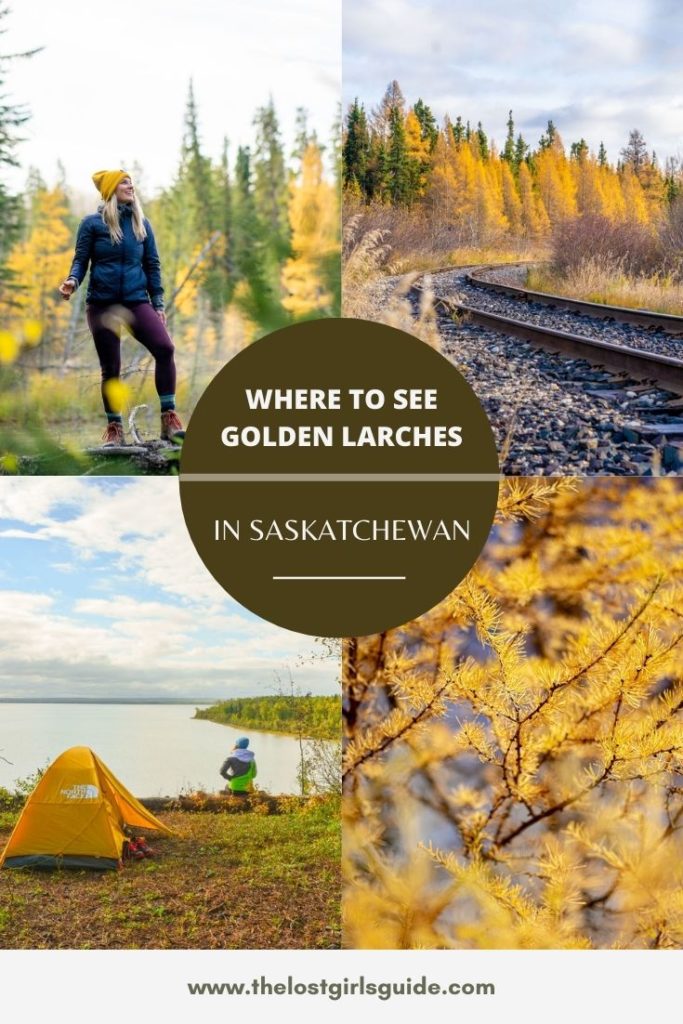

What you are doing is fabulous! What lake is the photo with the larch?